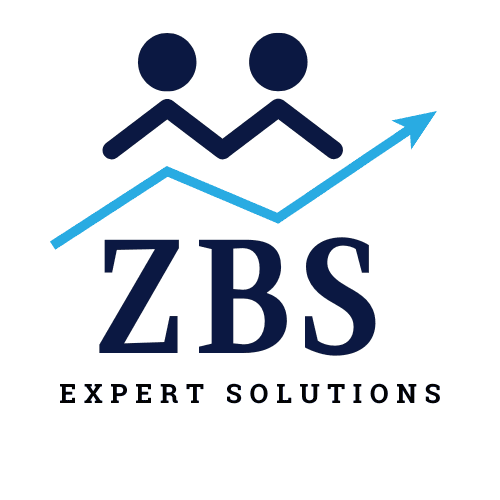The shift towards SaaS on cloud computing has revolutionised many industries, including recruitment. Traditional hiring methods, reliant on manual processes and outdated software, are being replaced by SaaS services, offering efficiency, scalability, and automation. While these platforms provide numerous advantages, transitioning to a SaaS-based recruitment system is not without its challenges. Businesses must weigh the benefits and potential hurdles to ensure a seamless and effective adoption of cloud-based hiring solutions.
The Evolution of Recruitment with SaaS Services
Recruitment has evolved significantly over the years. From newspaper ads and manual CV reviews to sophisticated AI-driven platforms, the hiring process has undergone a digital transformation. The introduction of SaaS on cloud computing has taken this a step further, providing real-time access to hiring tools, automated workflows, and data-driven insights. Unlike traditional software, which requires installation and maintenance, SaaS services operate on the cloud, allowing recruiters to access their systems from anywhere. This shift is particularly beneficial for businesses with multiple hiring managers across different locations, as it enables seamless collaboration and real-time decision-making.
Benefits of Adopting SaaS Services in Recruitment
Increased Efficiency and Automation
One of the biggest advantages of moving to a SaaS-based recruitment platform is the automation of repetitive tasks. Resume screening, interview scheduling, and candidate communication can all be streamlined using AI-driven features, reducing manual work and saving valuable time for HR teams. With automation, recruiters can focus on high-value activities such as candidate engagement and strategic workforce planning.
Cost-Effectiveness and Scalability
Unlike traditional recruitment software that requires large upfront investments, SaaS services operate on a subscription model, allowing businesses to pay only for what they need. This flexibility makes it an ideal solution for companies of all sizes, from startups to large enterprises. Additionally, SaaS on cloud computing can scale effortlessly with business growth, accommodating increasing recruitment needs without additional infrastructure costs.
Enhanced Candidate Experience
A smooth hiring process enhances the candidate experience, making it easier for job seekers to apply and communicate with recruiters. SaaS services offer user-friendly portals, instant updates on application status, and automated interview scheduling, creating a more engaging experience for applicants. A positive hiring experience can strengthen an employer’s brand and attract top talent.
Data-Driven Decision Making
Recruiters using SaaS on cloud computing gain access to advanced analytics and reporting tools. These insights help businesses track key hiring metrics, such as time-to-fill, cost-per-hire, and candidate quality. Data-driven hiring enables HR teams to make informed decisions, identify recruitment bottlenecks, and refine their strategies for better outcomes.
Improved Security and Compliance
With strict data protection regulations in place, businesses must ensure that sensitive candidate information is handled securely. Leading SaaS services comply with industry standards and implement robust security measures, including encryption, role-based access controls, and regular data backups. Compliance with local and global hiring regulations ensures legal adherence while maintaining candidate trust.
Challenges of Transitioning to SaaS-Based Recruitment
Integration with Existing Systems
One of the major hurdles businesses face when adopting SaaS services is ensuring seamless integration with their existing HR and payroll software. Some legacy systems may not be compatible with cloud-based platforms, requiring additional development and integration efforts. Selecting a SaaS provider with flexible API support can help mitigate this challenge.
Resistance to Change and Training Needs
While SaaS on cloud computing simplifies recruitment, the transition requires employees to learn new technologies and workflows. HR teams accustomed to traditional methods may initially resist the change, fearing disruption in daily operations. Proper training, user-friendly interfaces, and ongoing support can ease the transition and encourage adoption.
Dependence on Internet Connectivity
A fully cloud-based recruitment system relies on a stable internet connection. Any network downtime or slow connectivity can disrupt hiring activities, potentially delaying crucial recruitment decisions. Businesses must have contingency plans in place, such as offline access to critical candidate data, to prevent workflow disruptions.
Customisation Limitations
While SaaS services offer a wide range of features, some businesses may find limitations in customisation. Companies with highly specific recruitment workflows may require additional modifications, which could lead to increased costs or the need for third-party integrations. It is essential to evaluate whether the chosen SaaS solution can accommodate unique business needs.
Best Practices for a Smooth Transition
Define Recruitment Goals and Needs
Before implementing SaaS services, businesses should assess their hiring challenges and objectives. Understanding key priorities—such as automation, compliance, or candidate engagement—can help select the right platform tailored to the organisation’s needs.
Choose the Right SaaS Provider
Not all SaaS on cloud computing platforms are created equal. Businesses should conduct thorough research, compare providers, and choose a solution that offers reliability, security, and scalability. Reading customer reviews and requesting product demonstrations can provide valuable insights into a platform’s effectiveness.
Provide Training and Support
Ensuring HR teams are well-trained in using the SaaS recruitment system is essential for a smooth transition. Organisations should invest in onboarding sessions, hands-on workshops, and continuous support to help employees adapt to the new technology.
Monitor and Optimise the Recruitment Process
Once implemented, businesses should regularly track key performance indicators to measure the effectiveness of the SaaS services. Analysing hiring trends, candidate feedback, and system performance allows companies to refine their recruitment strategies and maximise efficiency.
Conclusion
The adoption of SaaS on cloud computing in recruitment brings significant benefits, from automation and cost savings to enhanced candidate experiences and data-driven decision-making. However, businesses must also navigate challenges such as system integration, employee adaptation, and connectivity dependencies. By carefully planning the transition, selecting the right SaaS services, and investing in training, organisations can fully leverage cloud-based recruitment to improve hiring efficiency and gain a competitive edge in talent acquisition. As technology continues to evolve, embracing SaaS solutions will be key to staying ahead in the dynamic world of recruitment. 




